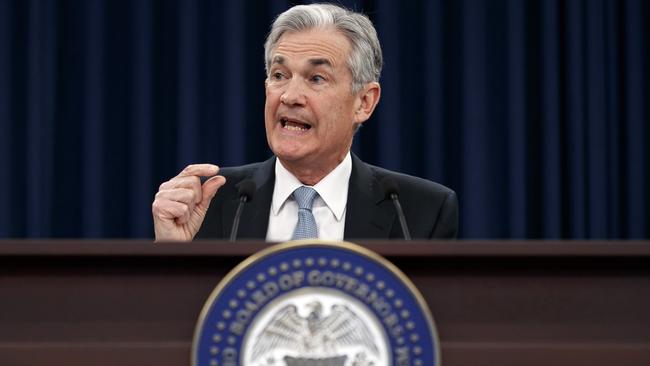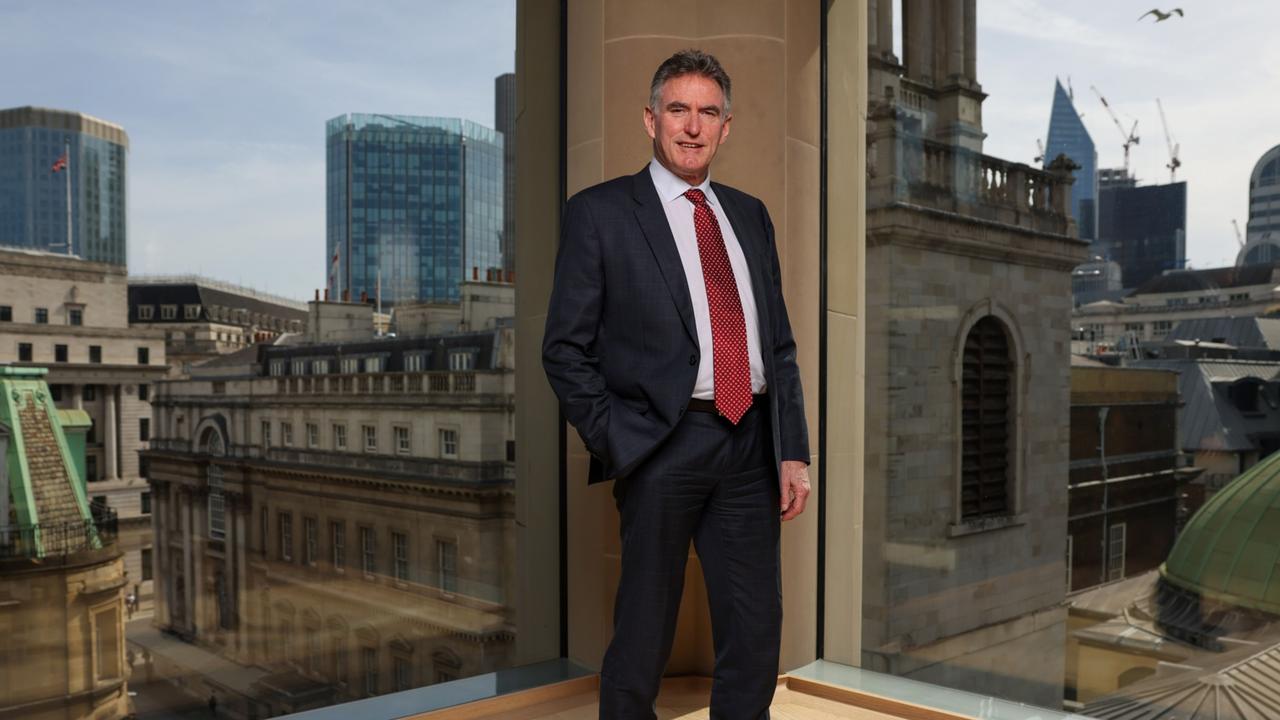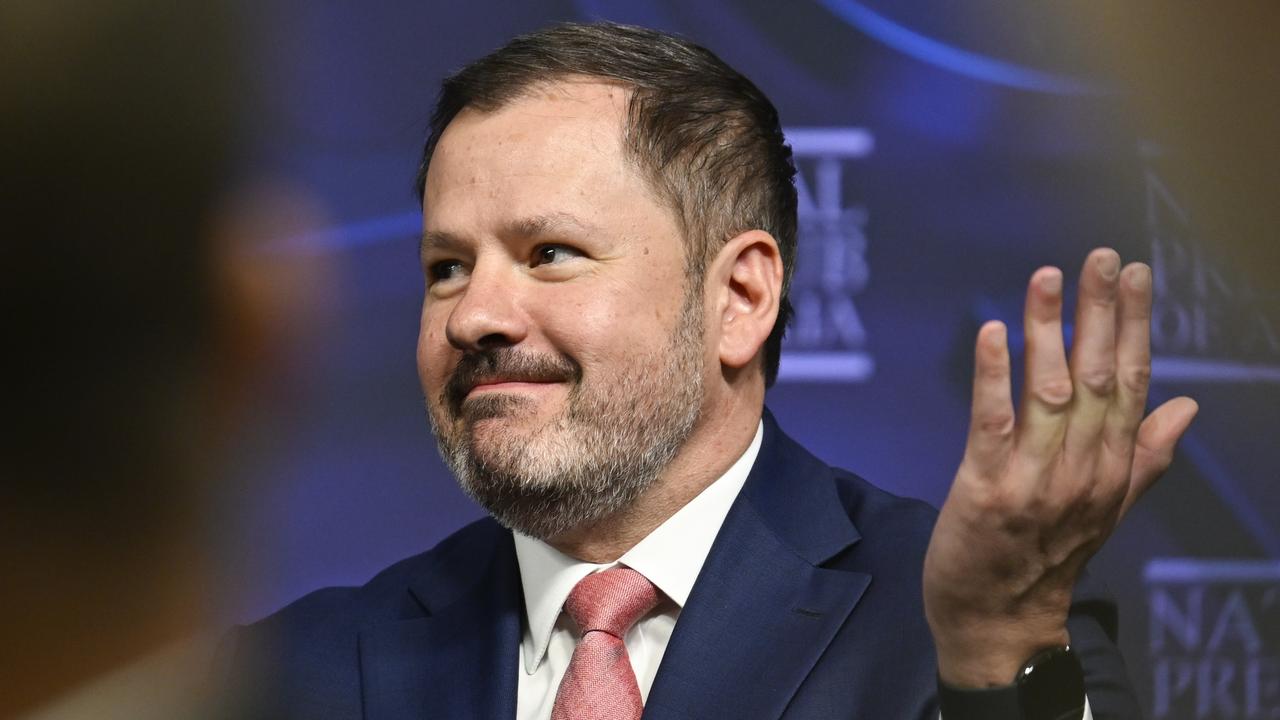US Fed raises rates, signals faster path next year
The US Fed has raised interest rates and signalled it could lift them at a slightly more aggressive pace in coming years.

The US Federal Reserve said it would raise short-term interest rates a quarter-percentage point and signalled it could lift them at a slightly more aggressive pace in coming years to keep the strengthening economy on an even keel.
Fed officials said they would increase their benchmark federal-funds rate to a range between 1.5 per cent and 1.75 per cent and pencilled in a total of three rate increases for this year.
But more officials think they will need to raise interest rates at least four times this year if the economy performs in line with their expectations. Some seven of 15 participants now expect at least four rate increases this year, an increase from four of 16 participants at the December meeting.
Most Fed officials also expect the Fed would need to raise rates at least another three times next year. At the December meeting, officials projected around two increases would be needed in 2019.
Officials also pencilled in two rate increases in 2020, which would leave them in a range between 3.25 per cent and 3.5 per cent.
“The economic outlook has strengthened in recent months,” the Fed’s rate-setting committee said in its postmeeting statement.
Fed chairman Jerome Powell, in his first press conference as central bank chief, added to the bullish picture by noting officials are projecting faster growth, lower unemployment and higher inflation in coming years than they expected in December.
“The job market remains strong, the economy continues to expand, and inflation appears to be moving toward” the Fed’s 2 per cent target, he said.
The vote to raise interest rates at the meeting was unanimous, with all eight participants in favour of the rate increase.
The rate increase approved this morning was widely expected. Traders in futures markets already anticipated the Fed would raise rates a total of three times this year, and before the two-day meeting ended this morning, investors placed a roughly 40 per cent probability on at least four interest rate increases this year, according to CME Group.
Officials marked up slightly the estimate of interest rates they expect to prevail over the long run, to a range between 2.75 per cent and 3 per cent. Because they now expect a slightly more aggressive path of rate increases in the coming years, this means more officials now anticipate they will need to tap harder on the brakes to cool down the economy after next year.
Officials release their economic projections every quarter. The new figures released today show they now expect inflation to rise above their 2 per cent target next year and in 2020. Inflation has remained below that target for most of the last six years.
After a surprising deceleration last year that defied the Fed’s forecasts, inflation in recent months has firmed. Consumer prices rose 1.7 per cent in January from a year earlier, according to the central bank’s preferred inflation gauge. So-called core prices, which exclude volatile food and energy categories, rose 1.5 per cent.
Fed officials now see core inflation rising to 2.1 per cent next year, up from an earlier projection of 2 per cent, and they see it staying at 2.1 per cent in 2020.
An open question for Mr Powell is how the Fed would respond to inflation if it rises above the 2 per cent target. Officials have said their target is symmetric, meaning they are as willing to tolerate periods of inflation slightly below the target as they are periods when it rises slightly above the target.
But because inflation has run below the Fed’s target since they formally adopted it in 2012, markets don’t have a good read on how policy makers would chart interest rate policy when inflation is above the target.
“There is no sense in the data that we’re on the cusp of an acceleration of inflation,” Mr. Powell said. “We have seen moderate increases in wages and price inflation. And we seem to be seeing more of that.”
Officials also revised up their estimates of economic growth this year and next year, likely reflecting an increase in federal spending Congress approved last month. Officials in December revised their growth projections higher because Congress was nearing completion of a bill to cut taxes by $US1.5 trillion over a decade.
They now see the economy growing by 2.7 per cent this year and 2.4 per cent in 2019, versus earlier projections of 2.5 per cent and 2.1 per cent, respectively. Their forecasts beyond that-2 per cent growth in 2020 and 1.8 per cent growth over the long run-didn’t change.
Because officials see the economy growing significantly faster than the level they expect will prevail over the long run, the forecasts imply officials see rising pressure on the economy’s productive resources, which could complicate their rate decisions.
The big question heading into their two-day meeting was how much Fed officials expected to lift rates in coming years, particularly after politicians approved a more generous federal funding bill in addition to cuts in corporate and individual tax rates at the end of last year.
In February, Congress approved a $US300 billion spending bill that could add around 0.4 percentage point to gross domestic product this year and next, on top of last year’s tax cuts that could add a similar boost to output over the same period.
Wall Street economists expect the measures will push unemployment down to the low 3 per cent range next year. US joblessness hasn’t been that at that level since the Korean War, and no one is quite sure what that could do to inflation or financial stability.
Fed officials now project the unemployment rate, which has held at 4.1 per cent since October, will fall to 3.8 per cent this year, down from 3.9 per cent in their December projection. They see it falling to 3.6 per cent in 2019 and 2020, versus earlier projections of 3.9 per cent and 4 per cent, respectively.
That would leave unemployment well below the level they see prevailing over the long run. They marked down that forecast a touch, to 4.5 per cent from 4.6 per cent in December. The revision indicates officials believe there might be a little more labour slack than previously estimated.
Since officials last met at the end of January, glimmers of rising wages jolted financial markets, illustrating how investors’ anticipation of stronger price pressures and a shift in the Fed’s rate path might usher in more volatility in stock markets.
The Fed raised interest rates three times last year and began allowing their large bond portfolio to slowly shrink.
Mr Powell, in recent congressional testimony, indicated he had turned more bullish on the economy since the start of the year.
“We’ve seen continuing strength in the labour market. We’ve seen some data that will, in my case, add some confidence to my view that inflation is moving up to target,” he said. “We’ve also seen continued strength around the globe, and we’ve seen fiscal policy become more stimulative.”
Dow Jones Newswires


